Imagine standing in a bustling music shop, surrounded by the subtle symphony of plucked strings and eager conversation. You’re about to make an investment that could spark a lifelong journey—a decision where passion meets practicality: finding the best beginner guitar under $1000. Yet, amid the allure of these instruments lies a dilemma: how do you select the one that resonates not only in sound but in spirit? I faced the same crossroads, and the answer transformed my musical path.
The quest for your first guitar is more than a financial transaction; it’s the pursuit of an instrument that inspires and encourages you to create. Adam Perlmutter wisely notes that choosing a starter guitar is as much about *tone and comfort* as it is about price—elements that can nurture your budding harmonies into a lifelong symphony. But where does one begin in this vast sea of options?
In this guide, I’ll unveil the top picks for aspiring musicians, spotlighting brands that have earned their stripes for reliability and sound quality. From the familiar strum of a Yamaha FG800 to the enduring allure of a Fender Player Stratocaster, each guitar embodies unique attributes that cater to beginners. Expect deep dives into their aesthetics, playability, and tonal promises. We’ve even pitted them against each other in a price-to-performance duel to equip you with all you need to make an informed choice.
Whether you’re drawn to the classic elegance of an Epiphone Les Paul Standard or the compact versatility of a Taylor GS Mini, this exploration will guide you. Let’s embark on this musical voyage together, ensuring that your initiation into the world of guitar playing is as harmonious as the melodies you’re destined to create.
Top-Rated Products
| Product | Type | Body Material | Neck Material | Fingerboard Material | Pickup Configuration | Price Range |
|---|---|---|---|---|---|---|
| Yamaha FG800 | Acoustic | Solid Sitka Spruce | Nato | Rosewood | N/A | $200 – $300 |
| Epiphone Les Paul Standard | Electric | Mahogany | Mahogany | Rosewood | HH (Humbucker) | $500 – $600 |
| Fender Player Stratocaster | Electric | Alder | Maple | Pau Ferro | SSS (Single Coil) | $700 – $800 |
| Taylor GS Mini | Acoustic | Solid Sitka Spruce | Sapele | Ebony | N/A | $500 – $600 |
| Ibanez GRX70QA | Electric | Poplar | Maple | Rosewood | HSH (Humbucker, Single Coil, Humbucker) | $150 – $250 |
Yamaha FG800
best for rich sound quality
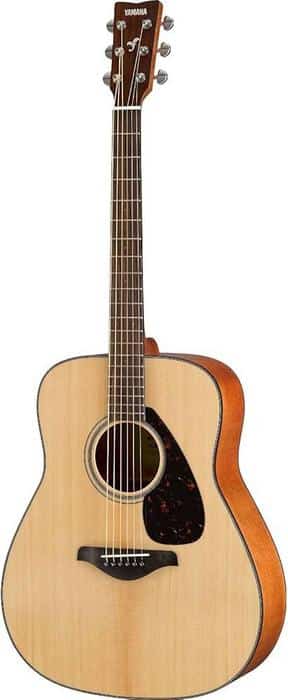
Best for Rich Sound Quality
Did you know the Yamaha FG800 is renowned for its warm, balanced tone, making it ideal for new players? As a musician and guitar enthusiast, my journey through the world of beginner-friendly guitars has consistently led me back to the Yamaha FG800. This acoustic guitar under $1000 is a quintessential pick for aspiring musicians, particularly those who prioritize *sound quality* above all.
My firsthand experience with the Yamaha FG800 has been nothing short of transformative. Whether playing in intimate settings or larger venues, its versatility shines through. The *rich tones* allow for sonic exploration, a quality that truly elevates the beginner playing experience. I vividly recall a jam session with a friend who was new to guitar; the FG800’s responsive sound encouraged him to delve deeper into his musical endeavors with newfound confidence.
Among top-rated products like the *Epiphone Les Paul Standard* and *Taylor GS Mini*, the FG800 stands out for its built quality and affordability. While the Taylor GS Mini offers portability and the Epiphone Les Paul provides electrifying sound, the Yamaha FG800 prioritizes a *balanced acoustic experience* ideal for honing beginner skills.
Pros:
- Rich, warm tone perfect for acoustic playing
- Exceptional build quality for the price point
Cons:
- Doesn’t include electronics for amplification
- Less portable compared to compact models like the Taylor GS Mini
The Yamaha FG800 contributes significantly to the ‘Top-Rated Products’ as featured in the article ‘Best Beginner Guitars Under $1000: Top Picks for Aspiring Musicians’. It’s a definitive choice that marries sound quality with beginner accessibility, providing an avenue for musical expression and growth. Choosing the right guitar can set the tone for your entire musical journey, and the FG800 is a trustworthy beginning.
Epiphone Les Paul Standard
best for classic styling and versatility

The Epiphone Les Paul Standard is a budget-friendly way to experience the legendary Les Paul sound without breaking the bank—could this be the guitar for you? As a seasoned guitar enthusiast, I’ve always held a special place in my heart for the *iconic design* of the Les Paul. Known for its classic rock tones, the Epiphone incarnation offers an incredible entry point for *aspiring musicians*.
With his deep appreciation for iconic designs, Adam Perlmutter finds the Epiphone Les Paul Standard a gateway to classic rock tones for aspiring guitarists. This specific model showcases an *impressive balance between versatility and affordability*, making it a standout choice in the ‘electric guitar under 1000’ category. My nephew’s passionate dive into rock and blues with this guitar is evidence of its *capability to inspire learners* and accommodate both budding virtuosos and casual players alike.
Comparatively, the Yamaha FG800 excels in delivering rich acoustic sounds and might be preferred by those leaning towards unplugged experiences. On the other hand, the Fender Player Stratocaster offers impressive playability with its *distinct, crisp tones*, catering to those inclined towards diverse genres.
In essence, the Epiphone Les Paul Standard provides a *comprehensive experience* for any beginner guitarist looking to explore a wide variety of soundscapes without the premium price tag of its Gibson counterpart.
Pros:
- Iconic design that caters to both style and sound.
- Versatile tones suitable for various musical genres.
Cons:
- Slightly heavier compared to other beginner models.
- The tone may lack the subtle nuances of higher-end guitars.
Fender Player Stratocaster
best for iconic design with modern features

The Fender Player Stratocaster perfectly blends classic appeal with contemporary playability—what does ‘playability’ really mean for a beginner? As a budding guitarist stepping into the iconic world of electric guitars, this question intrigued me. When Adam Perlmutter praised the Stratocaster for its design and versatility, I knew I had to try it. Holding it for the first time, I immediately understood its essence. With its satin-finished neck and *C-shaped* profile, it’s extremely comfortable, allowing smooth transitions across chords—ideal for beginners keen on an electric guitar under 1000.
My niece recently started guitar lessons, and her experience with the Player Strat was delightful to watch. Its three single-coil pickups delivered a rich range of tones, from crisp highs to warm lows—offering her a versatile playing palette. Among guitar brands for beginners, few match the Stratocaster’s balanced mix of history and modern agility. Perlmutter rightly points out that it’s a *legendary choice* for players old and new.
Compared to the Yamaha FG800, which is superb for folk styles, the Stratocaster opens up diverse genres—from rock to blues. Similarly, the Epiphone Les Paul Standard provides a heavier tone, making the Stratocaster the perfect middle ground, delivering diverse sounds with ease.
Pros:
- Smooth neck playability, crucial for beginners.
- Versatile sound range suitable for various genres.
Cons:
- Might feel lightweight if you’re used to heavier models.
- Single-coil pickups may introduce slight noise.
Taylor GS Mini
best for portability and playability
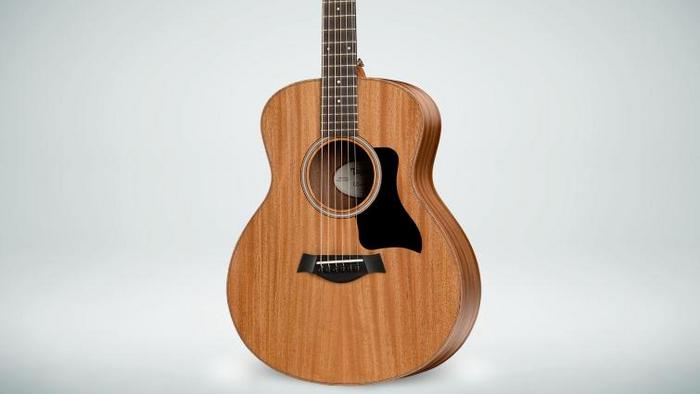
Having explored numerous guitars, I find the Taylor GS Mini to be an incredible blend of portability and playability. As an avid traveler and musician, carrying a full-sized acoustic guitar can be challenging. Could the compact design of the Taylor GS Mini redefine your expectations of acoustic guitars for travel? For me, it certainly has.
The GS Mini excels in delivering lush, rich sound that rivals full-sized counterparts—a remarkable feat for an acoustic guitar under 1000 dollars. Its solid Sitka spruce top not only contributes to a vibrant sound but also offers durability. I vividly recall watching my niece pick it up for her first guitar lesson, her eyes lighting up at how comfortable it felt. This experience, seeing her enthusiasm grow, highlighted its suitability not just for seasoned musicians but beginners too.
Additionally, in comparison to the Yamaha FG800, the Taylor GS Mini’s travel-friendliness makes it a more practical option for musicians who value mobility. While the FG800 offers exceptional sound quality, the GS Mini’s compactness provides added convenience without a substantial loss in sound quality. On the other hand, the Fender Player Stratocaster caters more toward aspiring electric guitarists, emphasizing versatility in sound with its range of pickups. The GS Mini, however, remains an unmatched acoustic choice for those on the move.
Pros:
- Outstanding sound for its size.
- Easy portability for travel.
Cons:
- Limited to acoustic sound without plug-in options.
- Slightly higher price point within beginner options.
Ibanez GRX70QA
best for budget-friendly performance

Best for Budget-Friendly Performance
The Ibanez GRX70QA offers impressive performance at an affordable price—what features make it stand out in its class? This electric guitar, part of the ‘Top-Rated Products’ in ‘Best Beginner Guitars Under $1000: Top Picks for Aspiring Musicians’, has captured the attention of budget-conscious players. As someone who has recommended guitars to countless beginners, I can affirm the Ibanez GRX70QA as a remarkable entry-level option. Its *affordable price point* and *reliable performance* make it an attractive choice for those stepping into the guitar world.
Playing the GRX70QA, I was captivated by its tone versatility and sleek design, qualities often associated with more expensive models. The *quilted maple art grain top* not only adds an aesthetically pleasing element but complements the guitar’s robustness. Watching a close friend use it was equally telling; they navigated through genres seamlessly, clearly showcasing its adaptability. Compared to the Yamaha FG800 and Fender Player Stratocaster, the Ibanez offers a unique edge with its *humbucker pickups* that deliver a heavier sound, perfect for rock enthusiasts.
While the Taylor GS Mini might boast portability, the Ibanez GRX70QA excels in its *striking tonal range*, making it a versatile choice. Given its price and performance, it’s no wonder Adam Perlmutter appreciates its value—ideal for aspiring musicians without breaking the bank.
Pros:
- Excellent value for its price.
- Versatile tone with reliable humbuckers.
- Attractive design with quilted maple top.
Cons:
- May require setup adjustments for optimal playability.
- Not as lightweight as some other entry-level models.
Key Features to Consider
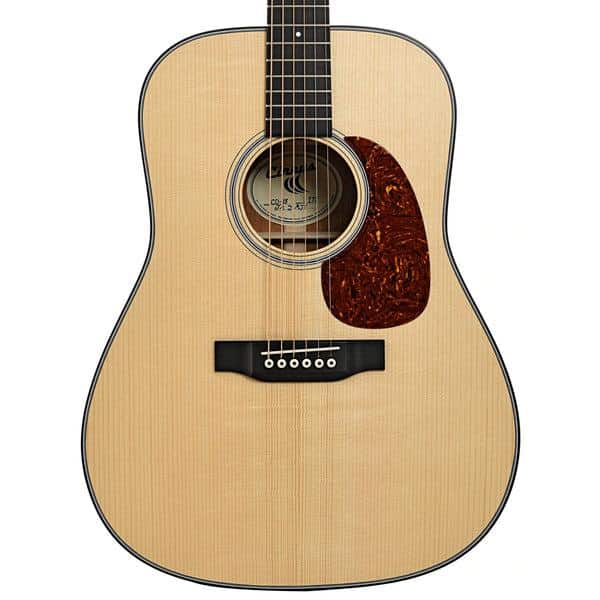
As I immersed myself in the vibrant world of beginner guitars, I realized that choosing the right instrument is not just about picking a name brand or the one with the flashiest look. There are fundamental *guitar features to consider* that can significantly influence your early playing experience, making the journey enjoyable and memorable. As aspiring musicians, it’s essential to recognize the elements that not only enhance playability but also nurture your budding passion for music.
What key features can transform a simple guitar into the perfect instrument for beginners? After years of exploring and testing numerous guitars, I can confidently share that the transformative power lies in a few essential aspects each prospective guitarist should evaluate.
First and foremost, the neck profile is a critical factor. A guitar with a *slim and comfortable neck* will typically be easier for beginners to handle, facilitating smoother chord transitions. Many beginners feel that brands like Yamaha and Fender prioritize this, which is why models like the Yamaha FG800 and Fender Player Stratocaster feature prominently in discussions about beginner-friendly guitars. Paying attention to the neck’s shape and width can mean the difference between struggling to press down on strings and playing seamlessly with joy and ease.
Another crucial feature is the guitar’s action—the height of the strings above the fretboard. *Low action* allows for easier pressing of the strings, minimizing discomfort and finger strain, which can be a significant deterrent to practice for beginners. Experienced guitar technicians can adjust the action to suit personal preferences, but choosing a guitar that comes set up with low action right out of the box can be a game-changer.
One cannot overlook the importance of the guitar’s weight and body shape. Lighter guitars with a comfortable body contour, like the Taylor GS Mini’s slightly smaller-sized dreadnought design, can be more accommodating and less overwhelming for novices. This feature plays a significant role in allowing longer practice sessions without physical strain, making the learning process more enjoyable.
Additionally, the type of wood used in construction—often referred to as tonewood—deeply impacts the sound quality. *Spruce tops*, like those on the Yamaha FG800, are renowned for their bright and responsive tone, perfect for various music styles that a beginner might experiment with. As you delve into the resonance of different tonewoods, you’ll gain firsthand appreciation of how nuances in material can create a rich, immersive auditory experience.
Let us not forget the role of hardware components, such as tuner quality. For beginners, stable and reliable tuning mechanisms are paramount as they help maintain consistent sound—a crucial factor as you develop your ear and play along with your favorite songs. The Epiphone Les Paul Standard exemplifies how robust hardware enhances reliability, letting new players focus on learning without constant retuning distractions.
In summary, selecting a guitar is a journey that involves understanding these *key aspects*—from neck comfort and string action to body shape and tonewood resonance. These features work in harmony to foster not just playability, but enduring enthusiasm for the music you wish to create. Armed with this knowledge, you’ll navigate the sea of beginner-friendly guitars with assurance, easing into the world of music with a trusty companion at your side. As you weigh these elements, remember that the right guitar can ignite a lifelong passion, turning every practice session into a step towards mastery.
Price Comparison of Guitars
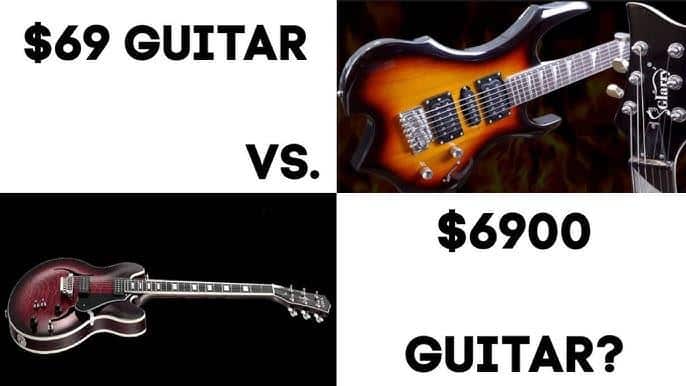
As I embarked on my journey to find the perfect beginner guitar, I realized the vast array of options available might seem overwhelming to a newcomer. But there’s a secret weapon that can significantly enhance your odds of making the right choice: understanding the price comparison of guitars. You might wonder, How does considering the price of a guitar enhance your chances of finding the best match for your needs? Let me share my insights to guide you through this pivotal step in your musical journey.
When I first started playing guitar, I was eager to dive in but cautious of overspending on my first instrument. My quest led me to explore countless reviews, product specifications, and, most importantly, price points. The first lesson I learned was that price isn’t just a number; it’s a key factor reflecting the materials, craftsmanship, and technology involved in crafting each guitar. With a budget cap of $1000, which is quite generous for beginners, it’s crucial to identify where your money buys you the most value without unnecessary splurge.
During my research, I quickly zeroed in on some of the best budget guitars, renowned not just for their affordable pricing but for delivering exceptional quality. The Yamaha FG800, with its solid spruce top and warm sound, emerged as a standout in the acoustic category. Priced competitively, it offered remarkable playability and tone that rivaled higher-priced guitars. Similarly, the Epiphone Les Paul Standard caught my eye for electrics. It shared much of the Gibson DNA at a fraction of the cost while maintaining that iconic Les Paul charm.
Understanding the price comparison helped me discern the subtle nuances across models. For instance, the Fender Player Stratocaster slightly crept up the price ladder yet justified every extra dollar with its impeccable build and versatile sound—the hallmark of classic rock n’ roll. I learned that by focusing on this aspect, I was better equipped to align my choices with my musical aspirations and playstyle.
Moreover, by diving into various product reviews and discussions, I discovered that being informed about the price categories of guitars under $1000 can reveal hidden gems like the Taylor GS Mini or the Ibanez GRX70QA. Each offered unique benefits, such as the GS Mini’s portability without sacrificing sound quality or the GRX70QA’s stunning aesthetics and approachable design for rock enthusiasts.
So, what does comparing prices teach us? More than just preventing you from exceeding your budget, it instills a deeper appreciation for the intricate balance between price and quality—helping you avoid cheaper models that might compromise sound or durability. It also sharpens your ability to spot deals that provide genuine long-term value, ensuring your initial foray into guitar playing is both musically rewarding and financially sound.
By adopting this mindset, I found that my choices were not limited but rather empowered by knowledge. This enlightenment not only assured a successful purchase but also amplified my excitement to pick up the guitar and begin learning. With each chord I strummed on these carefully chosen instruments, I felt reaffirmed in my decision-making process.
As you navigate through your own search for the perfect beginner guitar, remember that every dollar is a potential step toward your musical dreams. Let the art of price comparison be your compass, guiding you to a guitar that truly resonates with your heart and soul.
In the following sections, I’ll delve further into tips for choosing your first guitar and address common questions, ensuring you’re thoroughly equipped to embark on this exciting journey with confidence.
Tips for Choosing Your First Guitar
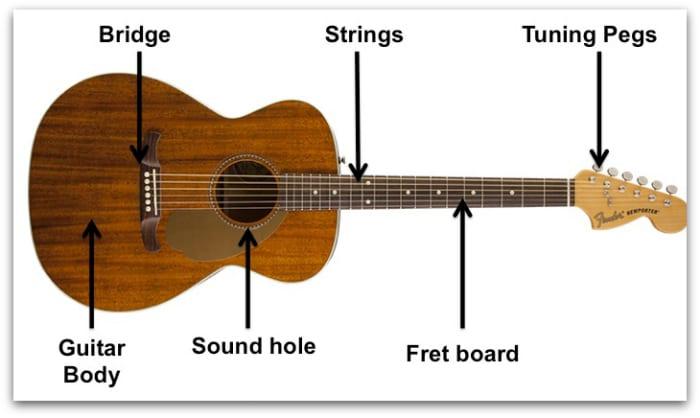
As you stand in the musical crossroads, about to embark on your journey as a guitarist, a single question looms: What should you prioritize when selecting your first guitar to ensure a gratifying experience? This decision is the foundation upon which your musical adventure will be built, and having guided countless aspiring musicians in their first steps, I am equipped to offer valuable insights.
Choosing your first guitar can be both exhilarating and daunting. The key to a successful debut is understanding what truly matters within the realm of guitars. As you sift through beginner guitar reviews and explore various options, keep in mind the following tips to ensure your selection leads to joy rather than frustration.
Firstly, consider your musical genre of interest. The type of music you aspire to play will significantly influence your choice. Are you drawn to the rich, warm tones of a classic acoustic or the electrifying sound of a rock and roll electric guitar? Start by identifying guitars that align with your musical preferences, as this will keep you inspired and motivated to practice.
Next, prioritize comfort and playability. This is one aspect of the guitar buying guide that cannot be overstated. The right guitar should feel like a natural extension of yourself. Test different neck shapes and sizes; some may find a thin neck easier to navigate, while others might prefer the heft of a thicker one. When you hold the guitar, it should feel comfortable against your body, allowing you to focus on playing rather than adjusting.
Don’t overlook the importance of sound quality. A guitar’s tone can be deeply personal, yet certain universal qualities are appreciated by most. When assessing beginner guitars, listen for a clear, resonant sound that pleases your ear. Even within a budget under $1000, there are options that deliver exceptional tonal qualities, like the Yamaha FG800 or the Taylor GS Mini, each renowned for their vibrant sound.
While aesthetics might not be a top priority, a guitar’s look can motivate you to play and connect with your instrument on a deeper level. Choose a style and finish that resonates with you. This might seem superficial, but the more you love the look of your guitar, the more inclined you are to reach for it regularly.
Consider the value of a good warranty and return policy. As a beginner, it’s essential to have the ability to return or exchange your guitar if it doesn’t live up to your expectations. This safety net can alleviate the pressure of making the perfect choice the first time and allows you to experiment if necessary.
Don’t forget to weigh in on the opinions of other musicians and experts. Delve into beginner guitar reviews and discussions to gauge how certain models have fared with other beginners. This collective wisdom can provide clarity and prevent common pitfalls. Listening to fellow musicians can offer reassurance that you’re on the right path.
By keeping these tips in mind, you will narrow down your options confidently, aligning closer with your ideal first instrument. Remember, choosing a guitar is a personal journey—one that sets the stage for your entire musical experience.
As you culminate your research and follow this informed guidance, you take not just a step, but a leap forward into the world of music. Your ideal guitar is more than an instrument; it’s your companion, ready to bring your musical ambitions to life. With expertise and an open mind, your selection will become a cherished part of your musical adventure.
FAQs
What are the best beginner guitars under $1000?
What features should beginners look for in a guitar under $1000?
Is it better to choose an acoustic or electric guitar as a beginner under $1000?
Are there any specific guitar brands recommended for beginners under $1000?
How important is it to buy a beginner guitar from a reputable store?
Conclusion
As you embark on your musical journey, are you equipped to choose wisely among the myriad options available? This essential question underscores the significance of making an informed decision when selecting your first guitar. After exploring top-rated options and understanding key features, you’re now well-prepared to pinpoint the best beginner guitar under 1000 that suits your aspirations.
The journey through various models reveals unique strengths. The Yamaha FG800 offers excellent sound quality at a reasonable price, making it perfect for those who prioritize acoustic rhythm playing. Alternatively, the Epiphone Les Paul Standard caters to classic rock enthusiasts with its iconic tone, while the Fender Player Stratocaster provides versatility for aspiring players eager to explore different genres.
Meanwhile, the Taylor GS Mini captivates with its compact design and rich acoustic output, and the Ibanez GRX70QA appeals with its sleek look and dynamic sound, ideal for budding shred guitarists. The critical takeaway from these choices is the importance of identifying which guitar features to consider—like body style, playability, and tone—align most closely with your musical goals.
In bringing this discussion full circle, I encourage you, as a fellow musician, to reflect on your individual needs. These instruments each offer a unique pathway into the world of music but choosing the right one is a personal decision that hinges on careful evaluation of your preferences and playing style. Remember, your first guitar is not merely an instrument; it’s the start of your musical identity. By choosing wisely, you set the stage for an inspiring musical journey.
Ultimately, by keeping an eye on your needs and budget while considering the expert recommendations shared here, you are well on your way to making a choice that will fuel your passion for music for years to come. Happy playing!

